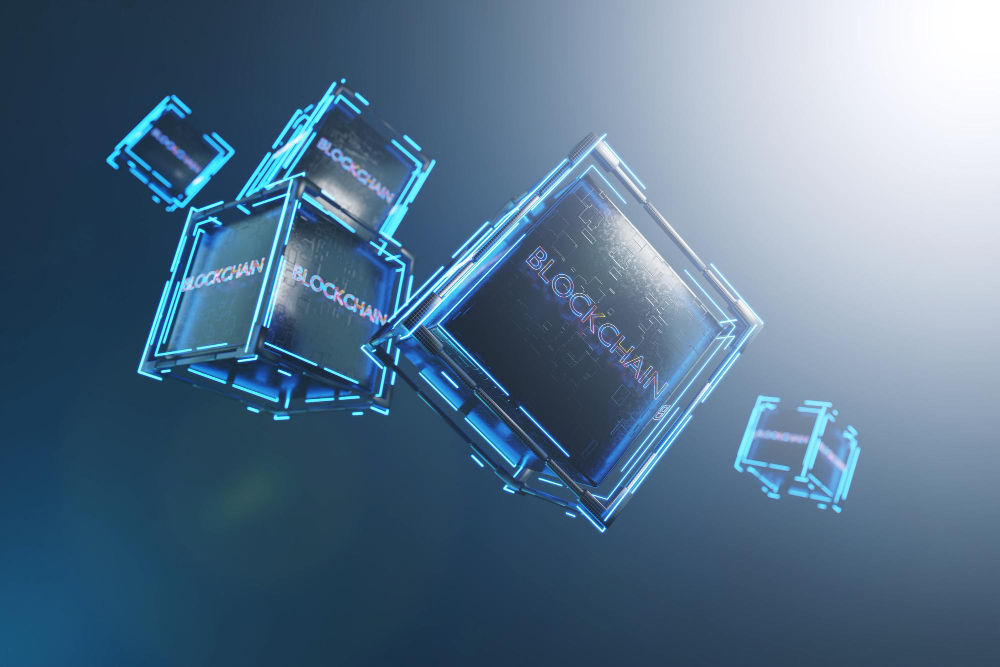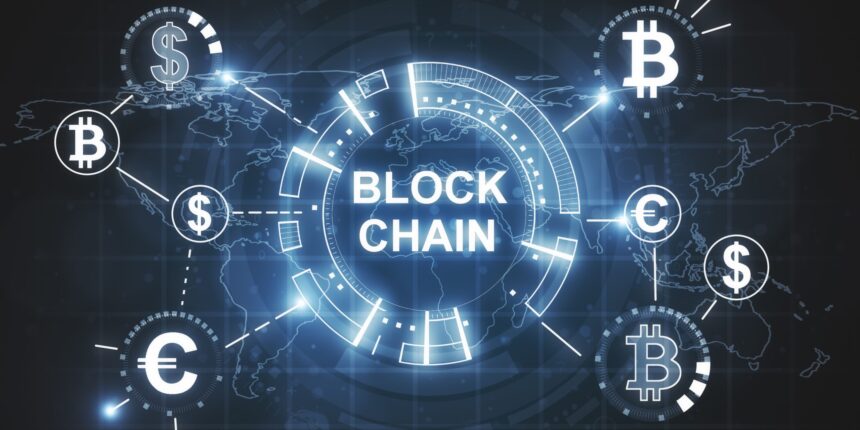In a world where digital innovation is advancing at lightning speed, one technology stands out for its transformative potential in the way we send and receive money: blockchain. Initially associated solely with cryptocurrencies like Bitcoin, blockchain has evolved far beyond its origins to become a foundational technology that is reshaping financial services, enhancing transparency, and fostering trust in transactions across the globe.
This article delves deep into the world of blockchain, explaining how it works, why it’s changing the way we think about sending money, and how its decentralized nature is revolutionizing everything from remittances to cross-border payments and business transactions. If you’re curious about why blockchain is being hailed as the future of money transfers, keep reading.
What is Blockchain?
At its core, a blockchain is a decentralized, distributed digital ledger that records transactions across many computers in such a way that the records cannot be altered retroactively. This makes the system incredibly secure and transparent.
Each transaction is recorded in a “block” and linked to the previous one, forming a “chain”—hence the name blockchain. These blocks are time-stamped and encrypted, and once verified, they become a permanent part of the ledger.
The beauty of blockchain lies in its transparency and immutability. Unlike traditional systems where data can be hidden or changed behind closed doors, blockchain operates on a system where everything is visible to authorized parties and cannot be changed without consensus.
Traditional Money Transfer Systems: Where They Fall Short
Before blockchain entered the scene, money transfers—especially international ones—relied heavily on intermediaries such as banks, remittance services, and clearinghouses. While these systems are functional, they come with significant drawbacks:
- High Fees: Banks and money transfer companies charge fees for currency exchange, processing, and international wiring.
- Delays: International transfers can take several days to process, particularly if multiple financial institutions are involved.
- Lack of Transparency: It’s often difficult for the sender or receiver to track the progress of a transaction in real time.
- Security Issues: Centralized databases are vulnerable to hacks, fraud, and data manipulation.
With globalization, remote work, and digital economies on the rise, these limitations are becoming increasingly problematic.
How Blockchain Solves These Problems
Blockchain is stepping in to solve many of the issues inherent in traditional financial systems. Here’s how:
1. Reduced Transaction Costs
Because blockchain operates on a peer-to-peer network, it removes the need for intermediaries. This dramatically reduces transaction fees. Whether you’re sending money across the street or across the world, blockchain-based solutions can offer significantly lower costs.
2. Faster Transactions
Traditional money transfers—especially cross-border ones—can take days. With blockchain, transactions can be completed in minutes or even seconds. This speed is a game-changer for individuals and businesses alike.

3. Unparalleled Transparency
All transactions on a blockchain are recorded in a public ledger. Anyone with permission can view the full history of a transaction, which adds a layer of transparency that traditional systems lack. This is particularly valuable in cases of audits, disputes, and fraud prevention.
4. Enhanced Security
Blockchain uses advanced cryptography to secure each transaction. Because each block is connected to the previous one, altering a single record would require changing the entire chain—a virtually impossible task without consensus from the network.
5. Accessibility
In developing countries where access to traditional banking services is limited, blockchain offers an opportunity to participate in the global financial system using just a smartphone and an internet connection.
Real-World Applications of Blockchain in Money Transfers
1. Remittances
Millions of people working abroad send money to their families back home. Traditional remittance services often charge exorbitant fees and take several days. Blockchain-based services like Stellar, Ripple, and Celo allow users to send money internationally at a fraction of the cost and time.
For example, a worker in the U.S. can send money to their family in the Philippines using a blockchain wallet. The funds can be received within minutes and converted to local currency almost instantly.
2. Business Payments
For businesses, especially those with international suppliers or remote workers, blockchain enables instant settlement and reduces the cost of doing business across borders. Smart contracts can even automate payments based on predetermined conditions, reducing paperwork and the potential for human error.
3. Charitable Donations
Blockchain allows donors to track how their money is used. This is especially valuable for charitable organizations that want to prove transparency. Platforms like Giveth and Binance Charity use blockchain to ensure that donations go exactly where they’re supposed to.
Popular Blockchain Platforms for Sending Money
Not all blockchains are created equal. Here are some of the top platforms that are making waves in the money transfer space:
Bitcoin (BTC)
The original cryptocurrency, Bitcoin is widely used for sending money. However, high transaction fees and slower processing times compared to newer blockchains make it less ideal for small or frequent transactions.
Ethereum (ETH)
Ethereum supports smart contracts and is the backbone of many decentralized finance (DeFi) apps. It offers faster transactions than Bitcoin, though gas fees can fluctuate.
Ripple (XRP)
Ripple focuses on bank-to-bank money transfers. It’s known for its fast and inexpensive transactions and is already being used by major financial institutions around the world.
Stellar (XLM)
Designed for low-cost international transfers, Stellar is particularly focused on helping the unbanked population. It facilitates transactions between different currencies in a matter of seconds.
Solana (SOL)
Solana offers lightning-fast transactions and very low fees, making it an increasingly popular choice for payments and money transfers.
The Role of Stablecoins in Blockchain Payments
One challenge in using cryptocurrencies for money transfers is price volatility. That’s where stablecoins come in. These are cryptocurrencies pegged to the value of a stable asset like the U.S. dollar.
Popular stablecoins like USDT (Tether), USDC (USD Coin), and DAI are widely used for money transfers because they combine the speed and transparency of blockchain with the stability of fiat currencies.
Government and Institutional Adoption of Blockchain
Governments and financial institutions are starting to recognize the benefits of blockchain. Many are exploring or already implementing Central Bank Digital Currencies (CBDCs) built on blockchain infrastructure.
Examples Include:
- China’s Digital Yuan
- The Bahamas’ Sand Dollar
- The European Central Bank’s digital euro project
This adoption signals growing trust and validation for blockchain technology in mainstream finance.
Is Blockchain Safe for Sending Money?
Security is one of blockchain’s strongest features. Transactions are:
- Encrypted
- Time-stamped
- Irreversible
- Validated by a network of nodes
However, the main risks come not from the blockchain itself, but from user behavior—phishing attacks, poor password practices, or using insecure wallets.
To stay safe:
- Use hardware wallets for large sums.
- Enable two-factor authentication.
- Only use reputable platforms for transactions.
Blockchain vs. Banks: A Future Showdown?
Banks are aware of blockchain’s disruptive power. Some are fighting it, while others are embracing it. Forward-thinking banks are already experimenting with blockchain for internal processes and international payments.
Yet, as blockchain continues to democratize access to financial services, we may see a shift in public trust—from traditional institutions to decentralized networks. Blockchain may not eliminate banks entirely, but it’s pushing them to innovate and become more transparent.
How to Start Sending Money with Blockchain
If you’re ready to explore blockchain for money transfers, here’s a step-by-step guide:
- Choose a Wallet: Software (e.g., MetaMask, Trust Wallet) or hardware (e.g., Ledger).
- Buy Crypto: Use platforms like Coinbase, Binance, or Kraken to purchase cryptocurrency or stablecoins.
- Send Funds: Enter the recipient’s wallet address and confirm the transaction.
- Track the Transaction: Use blockchain explorers like Etherscan or Blockchain.com.
It’s that simple—no waiting days for processing or paying hefty fees.
The Future of Money Transfers is Decentralized
Blockchain is not just a buzzword—it’s a paradigm shift. From remittances and payroll to donations and business payments, this technology is redefining what it means to send money.
With its transparency, security, speed, and low cost, blockchain represents the future of finance. As adoption grows and technology improves, we can expect even more innovative solutions that make sending money easier, faster, and more trustworthy than ever before.
Final Thoughts: Embracing the Blockchain Revolution
The global financial system is undergoing a transformation, and blockchain is at the center of it. For individuals and businesses alike, understanding how blockchain works and how to leverage its potential is no longer optional—it’s essential.
If you’re looking for a smarter, faster, and more transparent way to send money, blockchain may be the solution you’ve been waiting for. As the technology continues to mature, its impact will ripple through every corner of our economy—ushering in an era of financial transparency and trust.
So whether you’re a freelancer sending payments across borders, a company managing international payroll, or a family member supporting loved ones back home, blockchain offers you a better, more efficient way to move money.

